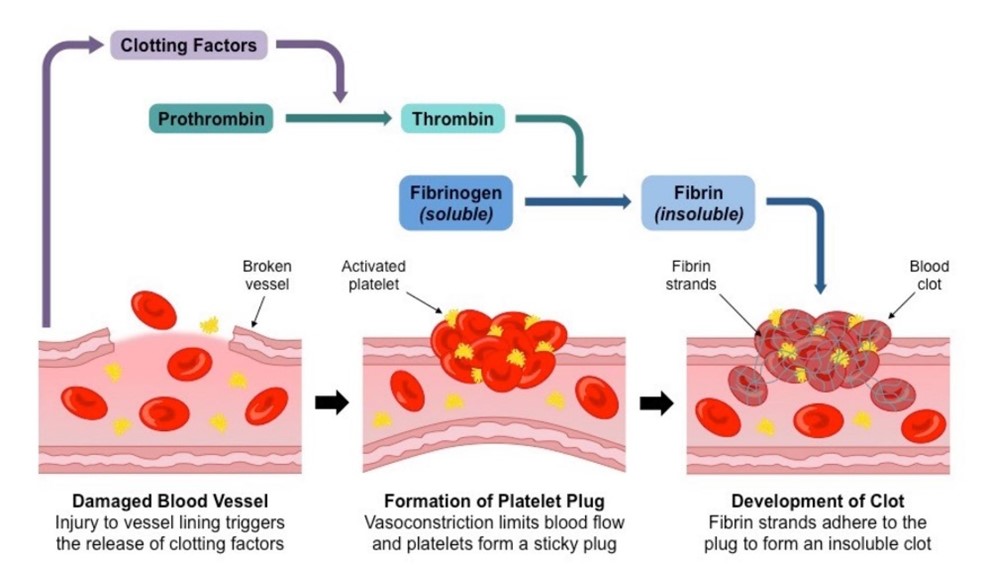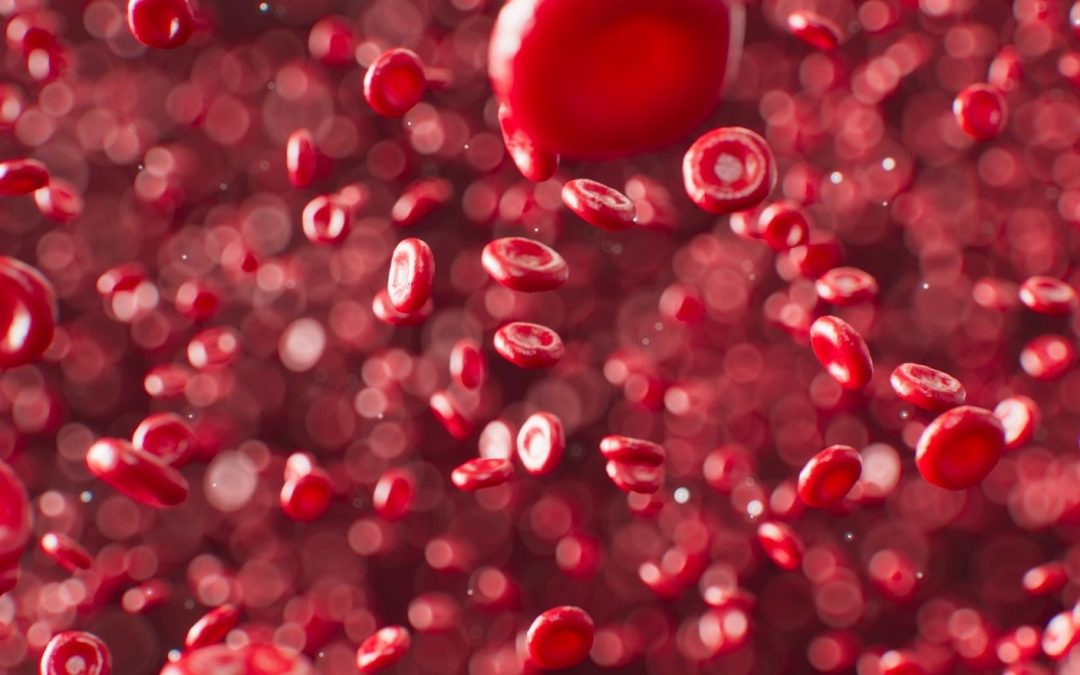Considering current events, the topic of blood clotting and coagulation is not quite fully understood. If the coagulation system (hemostasis) of the body is not functioning correctly, it can lead to many chronic health disorders and even death. When properly balanced, the coagulation system is designed to help the body with blood clotting, which plays an essential role in the body’s healing process.
However, chronic inflammation along with different infectious agents (such as a virus), chemicals, toxins, proteins, and other compounds can prove to be damaging to your vascular system, organs, and tissues in your body. Thus, resulting in an unbalanced coagulation system and a higher risk of unhealthy blood clotting. We will explore some of this intricate and complex system functioning and what can be done naturally to achieve and maintain proper balance.
Note: This discussion will not include genetic variants that influence the hemostasis/coagulation system.
What are signs and symptoms of dysfunction of coagulation?
We are going to focus our discussion more on the aspect of hemostasis that is involved with increased blood clotting and increased coagulation (hypercoagulation). The symptoms and problems associated with increased blood clotting and coagulation will vary depending upon the level of clotting, the organs, and the areas of the body where the clotting is most concentrated.
If located in the heart or lungs:
- Difficulty breathing
- Shortness of breath
- Chest pain
- Discomfort in the neck ,upper back, shoulders, and jaw
If located in brain:
- Headaches
- Changes in speech
- Slurred speech
- Dizziness
- Facial or other areas of paralysis
- Difficulty understanding or thinking
If located in the legs:
- Redness
- Warmth
- Swelling and pain – This may be a sign of deep vein thrombosis (DVT) or peripheral artery disease (PAD).
If located in the kidneys:
- Decreased in amount of urine
- Blood in urine
- Lower back and hip pain
- Nausea
- Vomiting
Please keep in mind these are more severe manifestations of blood clotting. However, there are other less severe symptoms and signs of increased coagulation that may occur years before more severe signs occur.
Other signs and symptoms of increasing blood viscosity, coagulation, and clotting
- Pain or stiffness after sitting or first thing in the morning
- Cold hands and/or feet
- Swelling/Edema in lower legs and ankles
- Elevated blood pressure
- Fatigue, chronic fatigue syndrome (CFS)
- Exercise intolerance, muscle weakness
- Mottled skin
- Infertility, miscarriage
- Insomnia, restless leg syndrome
- Generalized pain, deep aching pain, sometimes stabbing pain
- Brain fog, anxiety, mood swings
- Raynaud’s syndrome
- Irritable bowel syndrome (IBS), other digestive problems
As you can see this list encompassed a lot of different symptoms and health issues. Keep in mind that with hypercoagulability there isdecreased blood flow, decreased removalof cellular waste products, and subsequent decrease in the delivery of essential nutrients as well as oxygen throughout the body.
Causes of Hypercoagulation
- Infections from viruses, bacteria, mycoplasma, fungi, and other organisms.
- Trauma, tissue injury
- Hereditary/Genetic defects
- Chemical exposure, toxins
- Heavy Metals
- Allergens
- Vaccinations and other proteins
- Nutritional deficiencies – i.e. Vit E, Vit K
- Elevated homocysteine, alpha lipoprotein, cortisol
- Prolonged immobility
- Obesity, pregnancy, diabetes, certain cancers
- Hormone replacement (estrogen)
Coagulation 101
This is a very complex process that entails multiple steps and needs to be balanced to prevent excessive clotting, excessivebleeding, and proper clot removal (fibrinolysis). A proper functioning liver is essential as it is the main producer of these multiple enzymes/proteins known as clotting factors. Additionally, bone marrow is important because it is where one of the main blood cells called platelets are produced, which are crucial to the proper clotting process. Different sources of inflammation can disrupt normal coagulation at different steps. Below are illustrations of the coagulation process:


As mentioned above there can be varying degrees of blood clotting or formation of fibrin. Rapid bursts of thrombin can result in a clot, but slower release can cause strands of fibrin to adhere (stick) to the wall of the blood vessels (arteries and veins). In certain circumstances different organisms “use” these slow-release fibrin strands as a means of shielding themselves. This can allow some of these organisms to survive and even evade antibacterial or antiviral medications. Below, is a diagram of viral and protein involvement in coagulation:

How Do I Know If I Have a Coagulation Problem?
There are several tests to evaluate coagulation and potential issues. The most common is a basic test called Prothrombin Time (PTT) and Partial Prothrombin Time (PPT). These test measure how well and how fast you form a blood clot, but they are not sensitive enough to determine more subtle forms of hypercoagulation. Furthermore, a person may have “normal” PTT and PPT results, but still have health issues associated with hypercoagulation.
At Arizona Family Health Centre there are several ways we can evaluate enzymes and proteins that help to identify dysfunction in the hemostasis/coagulation system. Some of the factors that can be measured and tested for in our office are listed, below.
- D-Dimer
- Prothrombin Fragments 1+2
- Thrombin/ Antithrombin complex
- Fibrinogen activity
- Platelet count
- Plasminogen Activator Inhibitor
How to Reduce the Risk of Blood Clotting and Hypercoagulation
The first thing that comes to mind is to eat an anti-inflammatory diet and avoid foods that you have known allergies or sensitivities to. Additionally avoid eating too many saturated animal fats and oils such as polyunsaturated fats/oils. Polyunsaturated fats consist of corn, cottonseed, safflower, vegetable oils, and hydrogenated or trans-fats. Instead, olive, avocado, coconut, and flaxseed oils are better alternatives. Consumption of raw nuts and seeds helps to prevent hypercoagulation, as well as staying properly hydrated.
In addition, fish oils are very beneficial in preventing excessive “stickiness” and clumping of your blood platelets. Research on fish oils have found that they will not cause excessive bleeding and do not impose a risk prior to surgery if you are not taking an anti-coagulant medication.
Likewise, certain enzymes such as natto kinase, lumbrokinase (Boluoke), serrapeptase, bromelain, can help dissolve the fibrin strands, decrease blood viscosity, and decrease systolic and diastolic blood pressure. These enzymes may also prevent the formation of fibrin strands and clots.
Furthermore, vitamins such as Vitamin K are crucially important in the regulation of proper clotting. Vitamin K is derived from our diet and comes mostly from green leafy vegetables such as kale, spinach, and other greens. The vitamin K from foods is considered vitamin K1 and is converted into the usable form Vit K2 by the bacteria found in your digestive system(microbiome). Vitamin K is important in the production of prothrombin (factor 2), 7, 9 and 10. People who are taking Warfarin (Coumadin) should be cautious regarding taking synthetic K1. The jury is still out on taking extra “natural” Vitamin K2. A moderate amount of greens should be fine. The best way to ensure you are getting the appropriate amount of vitamin K is to check your clotting time.
Last, antioxidant vitamins such as vitamin B, C and E are all helpful in balancing the coagulation system. Vitamin E in the form of mixed tocopherols is the most effective rather than just alpha tocopherol.
Other compounds and nutrients that help to balance coagulation and reduce hypercoagulation
- Kyolic garlic (aged garlic)
- Ginger – found to be more effective than aspirin
- Ginkgo Biloba – be cautious if on anti-coagulant
- Turmeric and curcumin
- Grape seed extract
- Pyncogenols from pine bark
- Green tea
- Pomegranate juice
- Grapefruit juice
- Cinnamon
- Glucosamine/Chondroitin
- Beets
- Green Papaya
As you may notice coagulation or hemostasis is a complex system that works extremely well under most circumstances, but it can be influenced by many factors, including genetic influences. It is important to understand your personal situation and work towards maintaining a balanced coagulation system.
In addition to the tests listed above, there are several others available in our office to determine the various genetic components that may be influencing your health. If you suspect that you may have some health issues or want to dive deeper into this topic and how it relates to you, contact us at (480) 732-0911 and my staff would be happy to assist you.

